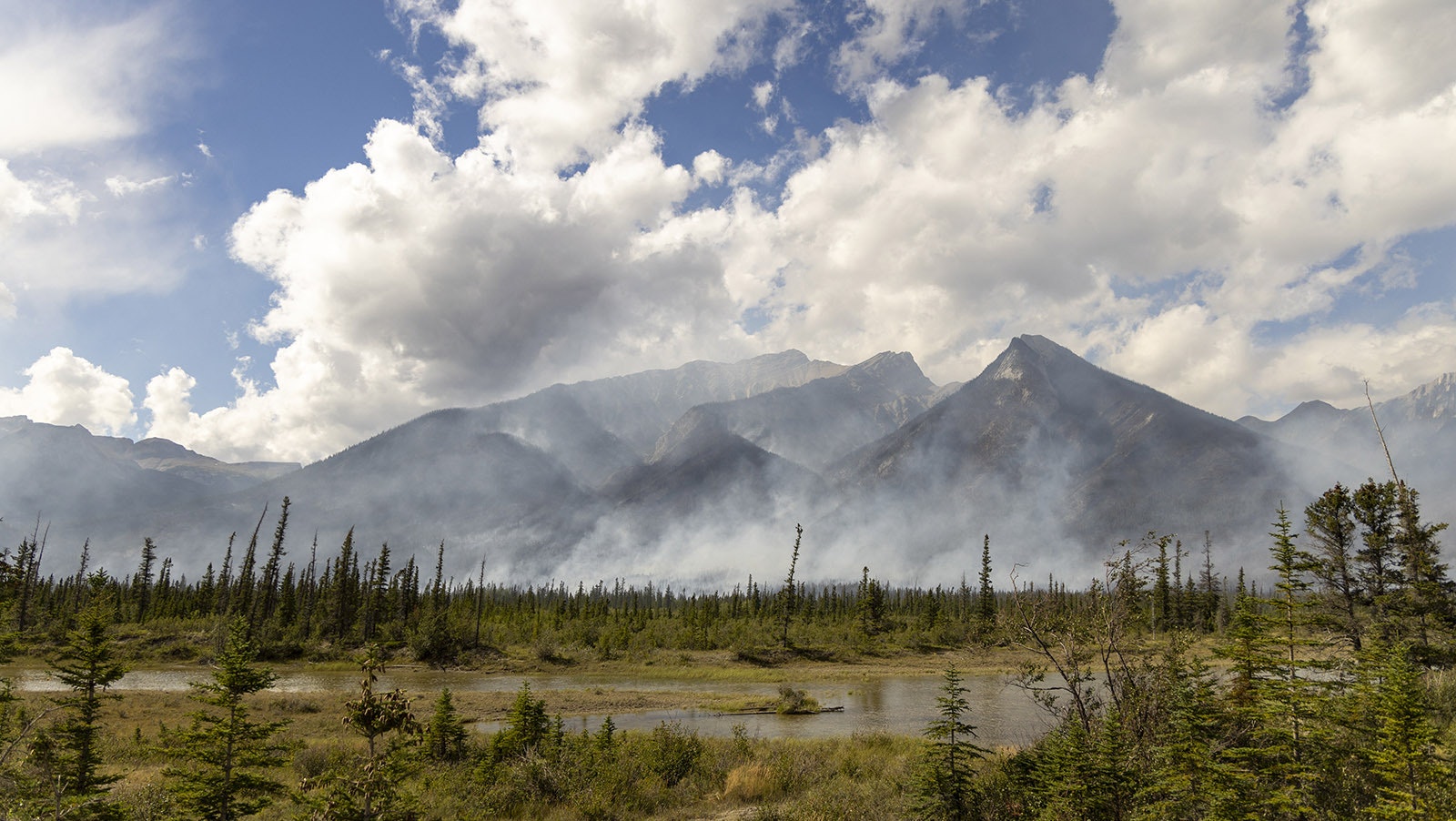As raging wildfires in western Canada put Wyoming and the surrounding region under a blanket of smoke, it raises the question of whether the Cowboy State also may face a monster wildfire season. Probably not, experts told Cowboy State Daily.
“Long-term forecasts do not indicate any significant anomalies for Wyoming, so a normal fire season is expected,” said Laura McConnell, a fire communications specialist for the Forest Service’s Rocky Mountain Region.
Rapid growth of greenery now could turn into tinder for forest fires later, said Aaron Voos, spokesman for the Medicine Bow-Routt National Forest.
“There is the possibility that lots of moisture now could lead to rapid growth of fine fuels and the potential for that to become wildfire fuel later,” he said. “That is all very dependent on whether our wet/cool weather pattern continues or changes, and the rate of snowmelt.”

Summer Could Be Rainy
It should be a wetter summer as the overall weather trend shifts from a hot, dry La Niña pattern to the milder El Niño, said meteorologist Don Watzel of Cheyenne’s Day Weather Inc.
And in the short term, some rain and cooler temperatures could “scour out” the lingering smoke from fires in Canada, he said.
That smoke caused air quality alerts in Montana and Nebraska, but none so far in Wyoming, Watzel added.
A buildup of greenery during the spring that dries out over the summer can make for a bad wildfire season, but grazing can mitigate it, said retired forester and wildland firefighter Karl Brauneis of Lander.
“The question of increased forage as it might contribute to an extreme fire season always comes up in years where we have a wet spring,” he said. “I have never seen that play out except in areas that exclude livestock grazing.”
2020 Mullen Fire Was A Whopper
Wyoming had a nasty fire season three years ago, particularly the Mullen Fire in the Snowy Range Mountains near Laramie.
That fire ignited in September 2020 and scorched nearly 177,000 acres.
Likewise, the current fires in western Canada sparked under unusually hot, dry conditions, Watzel said.
“Last week, they were running temperatures 15 or 20 degrees above normal for that area. They were hitting the 80s,” he said, adding that western Canada is expected to cool off and get some rain soon, which might help quench those fires.
Higher Temps, But More Rain
Meanwhile, it might start to get toasty in Wyoming over the summer, although that should be balanced out with ample rain, Watzel said.
“The seasonal outlook for June, July and August, not only for Wyoming, but the Rocky Mountains in general, does call for slightly higher-than-normal temperatures,” he said.
There could be windows of time between rainstorms when things dry out, meaning dry lightning strikes could cause forest or grassland fires, he said.
McConnell agreed that more rain than the region has gotten the past couple of summers could help dampen the fire season. Rainfall should return to “normal” levels, at least in parts of Wyoming.
“Near normal precipitation was reported over the mountains of Wyoming and Colorado maintaining the strong snowpack,” she said. “Eastern Colorado and eastern Wyoming saw deficits of 1 to 2 inches of moisture, which maintained abnormally dry to moderate drought conditions.
“The overall impact through this outlook period is for normal temperatures in May to transition to above-normal temperatures to the (Rocky Mountain Region) for the summer, with near-normal expectations for precipitation,” she added.
Management Is The Key
Brauneis said that based upon his experiences as a firefighter, he’s an advocate for forest and rangeland management through grazing, controlled burns and other means.
“I have been on fires where the range resource has not been managed and extreme conditions existed. In California, I once observed an official standing in waist-high forage talking about the extreme fire season due to the increased forage. The solution was easy — turn out the cows, the sheep and the goats,” he said.
“I believe the official was more interested in obtaining additional budget dollars for his agency through fear then understanding the actual impacts to the land by excluding range management,” Brauneis added. “This is why I believe that a good fire management officer must first be grounded in resource management.”
Mark Heinz can be reached at Mark@CowboyStateDaily.com





